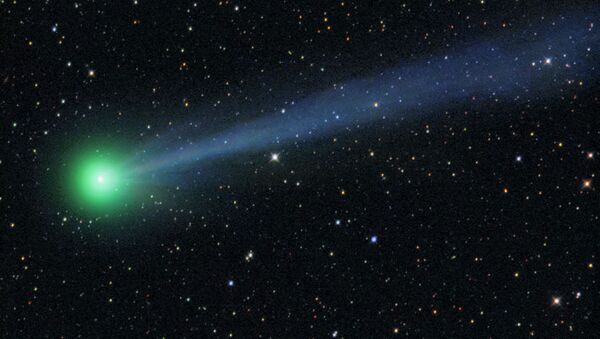NASA has approved funding for a groundbreaking "dynamic orbital slingshot" that aims to track asteroids by getting up close and personal with them, as proposed by researchers at the Massachusetts Institute of Technology (MIT), Phys.org reported.
The project, which presupposes that a small fleet of static satellites, parked in orbit, would slingshot small-scale missions at roaming interstellar objects was noted by NASA's Innovative Advanced Concepts (NIAC) programme - a division that primarily focuses on cutting-edge technology and space exploration techniques.
Richard Linares, an assistant professor at MIT's Department of Aeronautics and Astronautics and author of the concept, said that the current research of interstellar visitors is fraught with problems given their possible size and physical characteristics:
"There are a lot of fundamental challenges with observing [interstellar objects] from Earth — they are usually so small that light from the Sun needs to illuminate it in a certain way for our telescopes to even detect it", he remarked, also stressing that current propulsion technologies are also "a limiting factor" preventing from getting into space fast enough.
The minuscule artificial satellites the team hopes to deploy use miniature solar sails to adjust their orbits and maintain a suitably close position that would enable them to come close to comets and asteroids and conduct research.
The satellites will be deployed and sent into the path of approaching objects at short notice, after the latter are detected with the best placed satellite tasked to come into contact with the celestial bodies.
Every solar sail would accumulate energy so that it would be enough for the satellite to fling itself at an object in question.
Irrespective of whether or not this concept could yield results, there's no question about the scientific value of studying an ISO up close.
"Studying an interstellar body close-up would revolutionise our understanding of planet formation and evolution", commented team member Benjamin Weiss from the Department of Earth, Atmospheric and Planetary Sciences at MIT, praising the opportunity to shed light on how possible the cosmic transfer of life is.
"For the first time, we could obtain sensitive measurements of the bulk composition of other solar systems. We could also learn how quickly and how commonly objects transit between solar systems, which will tell us the feasibility of the interstellar transfer of life".
NIAC has for now approved the concept for Phase One, a nine-month study to determine its general viability. If proven successful, NIAC may approve the subsequent two phases, with the team set to make use of this extra time to further develop the concept.




